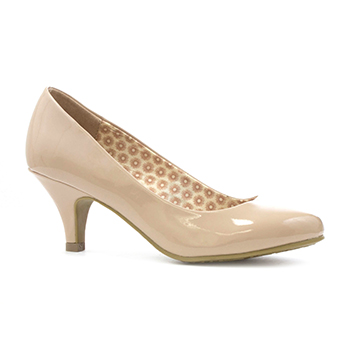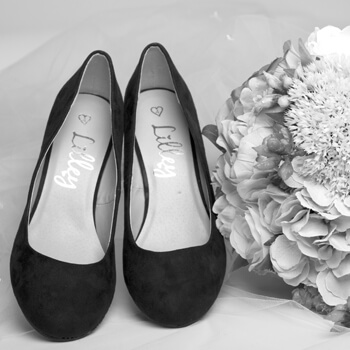Are High Heels Better Than Flats?
Though both types of women’s shoes can cause issues, they’re not all bad! There are plenty of advantages to wearing them too!
Shoes with a small heel, for example, are great for realigning your posture, forcing you to stand straighter. Heels that are too high however, can have the opposite effect and cause you to over compensate. Heeled shoes also offer more support for the tendons in the feet, reducing the need to over stretch them as with flat shoes.
Though there’s no real evidence to suggest it’s absolute fact, but there’s strong suggestion that wearing shoes with a heel can also burn more calories! It’s noted that wearing heels strengthens muscles in the lower leg and ankle where wearing flat shoes don’t. Heels are also purported to aid pelvic floor muscles and with core strength.

From an aesthetic point of view, heels are also great for adding a little height if you’re on the shorter side, giving the illusion of longer legs too. Not forgetting the added sex appeal they can add if you so wish! Or if you want to add a dash of sass to your favourite power suit, a good pair of heels is all it takes.
Flat shoes on the other hand should definitely have a place in your wardrobe. Whether that be ballet flats, trainers or sandals. Flat shoes are practical and much more versatile than heels, they’re also a safer option in poor weather. Wearing flat shoes with a low heel will likely be far more comfortable than high heels or extremely flat shoes. This is because the whole of the foot and arch are fully protected without putting too much pressure on sensitive areas such as the toes and heel.
Flats can be dressed up or down and in many cases, a good pair of flat shoes can go with many different styles of outfit with minimal fuss.
Should I Wear Heels or Flats to My Wedding?
This decision is entirely yours, but bear in mind that these are shoes that you’ll be wearing for the whole day, so comfort should always be your biggest priority. The last thing you want is to be distracted by sore feet on your big day!
If you decide that heels are the way forward for you, go for a mid-heel with a decent insole and supportive instep. If you feel that a mid-heel is too much, opting for a kitten heel may be the way to go. Not only do they look feminine and elegant, but kitten heels are perfect if you want to add a vintage vibe without compromising practicality.

Flats can definitely work too! Wearing flat shoes for your wedding has become increasingly popular over the years, with more and more brides steering away from tradition and going for wedding-themed trainers and canvas pumps. If this is more your thing, maybe go for a contrasting colour to really make a statement!
You could always mix it up too, why not choose a heeled pair and a flat pair for your wedding outfit and alternate throughout the day. This way, you know you have back up if needed and you can also vary your look!
Are Heels or Flats More Professional?
The truth is that both can be professional, it’s about knowing what’s suitable and what isn’t. Bright red 5-inch heels with a 2-inch platform probably won’t be seen as the best footwear for the office, nor the most practical.
Heels can however make a real difference to your confidence, but maybe go for a block heel in a neutral colour such as black or navy blue. Your shoes shouldn’t distract from the rest of your attire, particularly if you’re in an interview. Every professional wardrobe should have at least one pair of court shoes in it!
In much the same way, flat shoes can also be professional, but a more structured style with a solid sole and supportive heel would be considered the best option. And like heels, avoid designs that are too distracting, unless you’re in an environment that appreciates slightly more outlandish vibes of course!
Should I Wear Heels or Flats for a Night Out?
Much like your wedding, it all comes down to personal preference. There’s a good chance you’ll spend quite a lot of time on your feet so accommodating for that is a must. As well as the practical aspect, think safety too. If you’re going out for a night on the tiles, and getting a little tipsy is the plan of action, heels probably aren’t going to do you any favours.